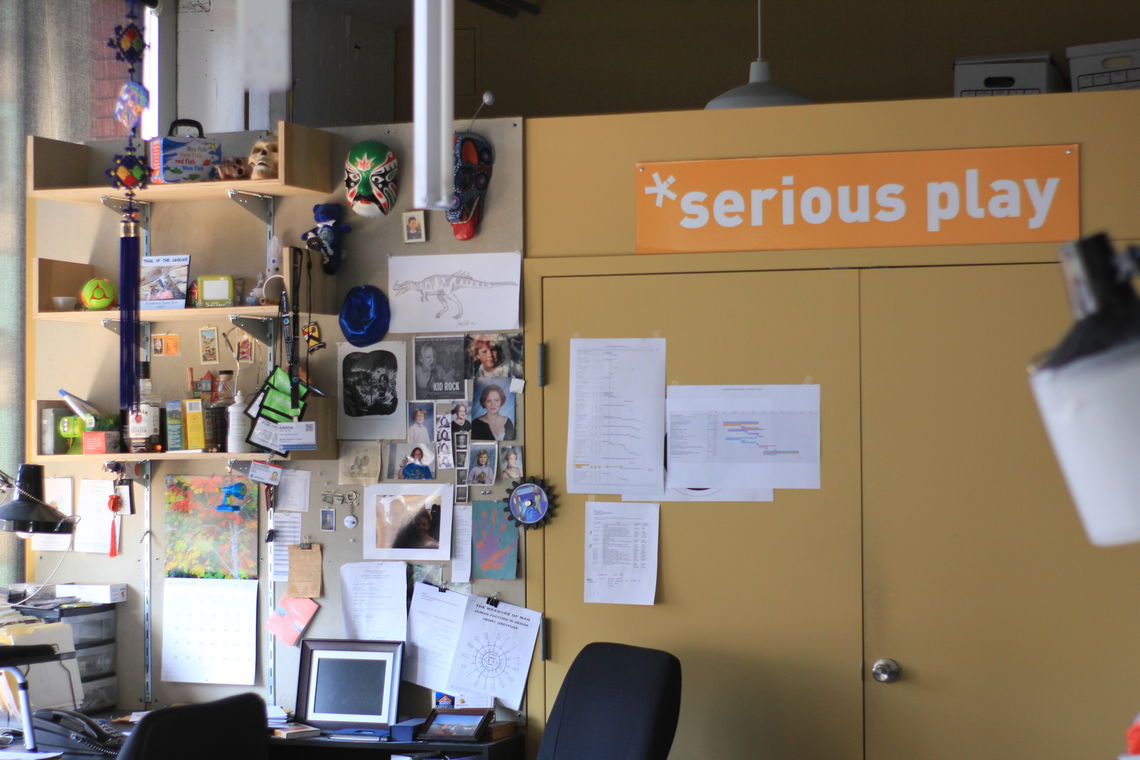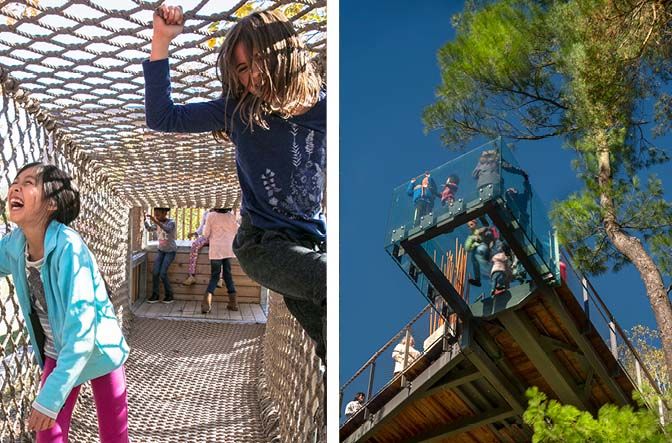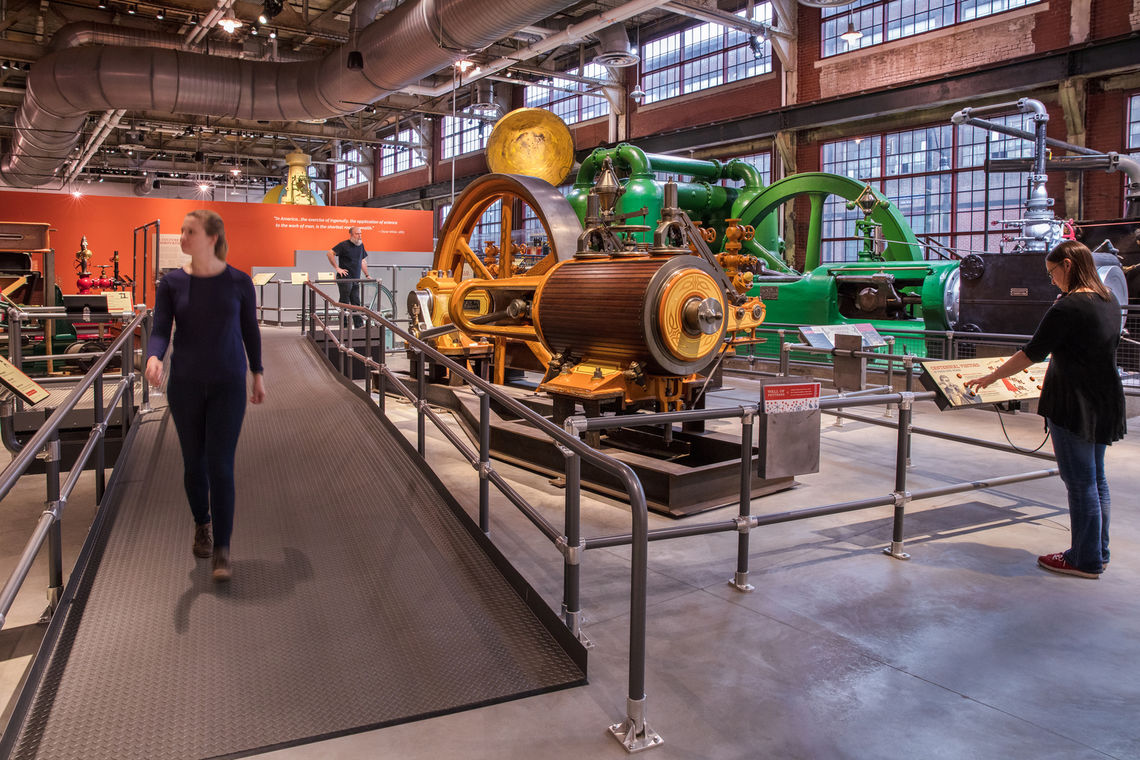What inspires Aaron Goldblatt?
Here’s more about the people, culture, knowledge, experience, and interests that drive our studio.
After kicking things off with our founder, Alan Metcalfe, we spoke with Aaron Goldblatt—Partner, Museum Services at Metcalfe—to learn what drives him.

Aaron's workspace (Photo by Jason Manning)
Aaron: The word play. That’s what drives me every day. I’ve been studying the activity for over 30 years. Wherever people are, as long as they are there long enough, play will happen. It happens in schools, museums, and even prisons. Play is fundamental to being human. At the same time, it can be, surprisingly, frustratingly difficult to stimulate play among strangers. So what is a designer to do?
Over the years, I’ve found the answer is to bring in play’s social lubricator—novelty and a sense of risk. Alan brought up our Tree Adventure at Morris Arboretum project in the previous issue, so I’ll focus on other examples where we brought in perceived risk to encourage play. At Abington Friends School, we created an abstract play structure that challenges students to take physical risks on their own. There are a number of elements, but the most popular is the net bridge that kids use to get from one end to the other. Similarly, at Whiting Forest of Dow Gardens, a glass-floored platform hovering 40 feet above the ground always draws a crowd. There is something about seeing the ground far beneath you, or being suspended in the treetops by a net, that invokes a little nervousness and inspires social interaction.

Left: Abington Friends School Headwaters Discovery Program (Photo by Aileen Bannon)
Right: Whiting Forest of Dow Gardens (Photo by Nic Lehoux)
But incorporating genuine novelty into our design doesn’t mean we need to always go for extreme heights. For example, look at what just a few feet of elevation does at the National Museum of Industrial History. There we created a slightly elevated walkway around the floor of the museum’s galleries of huge industrial machinery. Being a little up off the ground affords visitors a totally different perspective of scale and awe. The novelty of being lifted up, even slightly, sparks learning and inspires strangers to talk to one another.
I should add that there are many types of play: social, physical, intellectual. (The museum is an example of intellectual play.) So while an elevated walkway may not seem like a playscape, its design and intended outcomes are absolutely rooted in the aims and joy of play.
Designing for play can seem a fairly simple task, though the outcomes are profound, in my opinion: learning, laughter, and creating genuine connections between people, nature, and history. It’s these outcomes that really inspire my design. That’s why I am always looking for ways to bring play into the picture.

At the National Museum of Industrial History, a slightly elevated walkway
(Photo by Aileen Bannon)
